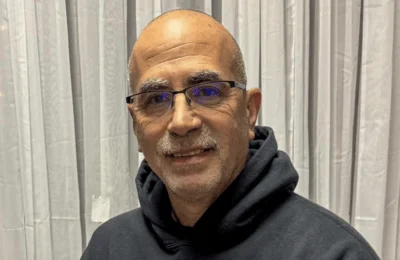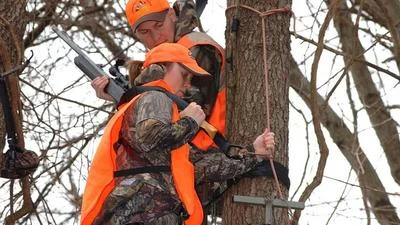So this month I have spent a lot of time outdoors, having hiked several state parks, one national wildlife preserve, and several miles at a couple of our local Boy Scout Camps, but as my first real feature, I want to talk about a hike I did earlier this spring.
My wife and I took off for a day to enjoy some local scenery and ended up outside Mansfield at the Ohio Bird Sanctuary. I had the pleasure of meeting several of the facility’s employees and volunteers, as well as some residents of the sanctuary. On this particular day, they featured a screech owl as part of their “Keeper Talk” which happens almost daily now (feel free to check out ohiobirdsanctuary.com for more information and a calendar of events). There are several well-maintained trails throughout the sanctuary, with many opportunities for birdwatching as well as general wildlife viewing.
After a short stop at the visitors center for the keeper talk, we were on our way down the elevated wooden boardwalk to see the treehouse classroom built by Nelson Treehouse of the TV Show “Treehouse Masters.” After that we proceeded down the Red Shouldered Hawk Trail to the Wood Duck Trail, which is a nice walk through the bottomlands of the sanctuary, along the beautiful Clearfork River. That led us back up to the Barred Owl Trail, where you can see one of the few Indoor Flight Complexes in this part of the country: a large, enclosed area where injured birds of prey can be allowed to practice soaring while recovering from illness or injury.
After that, we toured the aviary and met several other residents of the sanctuary that, due to illness or injury, are unable to be returned to the wild. All in all, it was a pleasant experience. The grounds and trails are well maintained, and even on that particular day with a light dusting of snow following a rather heavy couple of days of rain, the trails were in good shape.
The Ohio Bird Sanctuary is an excellent opportunity for what I like to call a minimalist hike. It’s a good destination with a purpose aside from the hike, and while there is some elevation change on a couple of the trails, there’s nothing extremely challenging or requiring advanced technique or gear. It’s a great place to take a trekking pole, a water bottle, a first aid kit, and maybe a light snack and spend a morning or afternoon just enjoying being outside.
As I mentioned previously, there are a few items I rarely hike without, even on a minimalist hike such as this. I covered a few of them last time, but mentioned a couple more today. One of those items is a water bottle. Now, I am rather particular about my water bottles, with Nalgene being my go-to brand ( Nalgene.com), they come in many sizes, colors, patterns, and are, in my opinion, about the best value for the money, with a couple I own and still use having lasted many years and hundreds if not thousands of hours in the outdoors. More importantly than how you carry water is the fact that you are carrying water on hikes. Even if you don’t plan on being out for hours, plans change, and one thing you don’t want to find yourself without is water. For long backcountry hikes or backpacking trips, a means to purify water may be more weight-conscious than packing several gallons of water around, but we will leave water purification options for another discussion.
The second thing I consider to be a “never enter the outdoors without” item is a first aid kit. Now I’ve often said, there’s no more troubling a feeling than that of being a paramedic without the tools of your trade, and I have made it my journey to teach others how use everyday and unconventional items for first aid purposes, but a minimalist first aid kit is something you should never leave home without. Now, this doesn’t need to be a field surgery kit, just a few adhesive bandages, maybe some personal or over-the-counter medications, a couple of bite/sting relief pads, a pouch of triple antibiotic ointment, and an antiseptic wipe or two. There is an array of small, personal first aid kits commercially available and designed with the outdoors in mind, and most offer the ability to add a few personal comfort items as well. Remember, this first aid kit is for you, or for someone you’re hiking with to use on you, so unless you are tasked with medical support for a hike, there’s little to no reason to carry an overabundance of medical supplies.
A great idea for those wanting more information on first aid in the wild is to take a Wilderness First Aid course. The course teaches minimalist thinking and alternative uses to provide first aid in an austere environment with limited resources. I personally teach this course through The Emergency Care and Safety Institute and highly recommend it for those considering some backcountry hiking or backpacking excursions. You can contact me through ECSI’s website (ecsinstitute.org), by searching Muskingum Valley Council BSA or by contacting the council office directly. We hope to offer the course locally in the future, so keep an eye out for more information.
The seasons are changing, the flowers and trees are blooming, the bees are buzzing and the birds are singing. Personally, this is one of my favorite times to hike, and just enjoy what nature has to offer our senses. As the weather warms up, take every opportunity to get out and enjoy the outdoors, do it safely, and enjoy your time outside.







